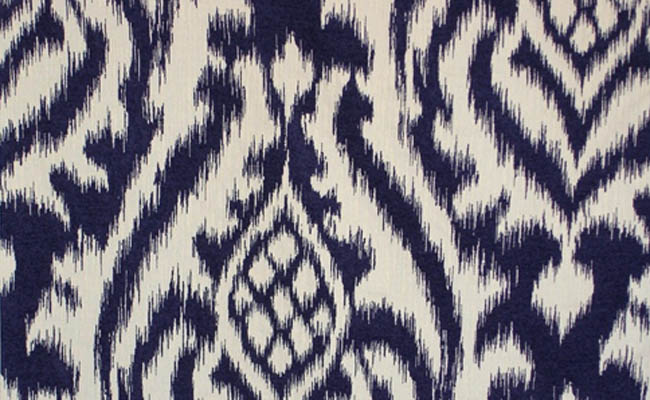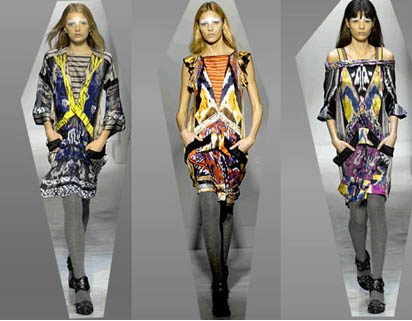

For the past few years ikat, a dyeing technique used to pattern textiles, has been a huge craze in fashion and home interiors. It can be seen on everything from dresses to bed sheets. But despite its recent surge in popularity, this is no new trend.
What is ikat exactly?
Ikat is centuries old, and has a lot more behind it than you may think. Did you know, for instance, that most ikat textiles found in stores are fake? That’s right, impostors! In order to be a true ikat textile, the creation process has to follow the proper guidelines. We’ll fill you in on what makes a real ikat fabric.
Ikat (pronounced “ee-cahht”) is characterized by patterns made up of colored lines. In true ikat, these “lines” are actually threads. Woven textiles are made up of threads going in two directions: vertical and horizontal. The vertical threads that are wound onto the loom are called the warp threads; the horizontal ones that are woven in are called weft threads. To create an ikat pattern, these threads are dyed and then woven to create its distinctive look!
There are tons of different ways ikat fabric can be dyed. The most distinguishable is the resist method, which is similar to tie-dye. A resist that the dye can’t penetrate is applied to the threads and after they are dyed, a pattern is created.
This resist was traditionally made with batik wax or wrapping the threads with waxed string. Now, however, there is a commercially available “ikat tape,” which is a plastic, dye-proof tape that works far better than anything else. Like the waxed thread, ikat tape is wrapped around the threads being dyed to protect select areas from the color. (A word of warning: don’t substitute plastic wrap for ikat tape, the resist won’t come out!)
Both the warp and weft can be resist-dyed to get different results. To get the exact planned pattern in a weft ikat, care needs to be taken to center the threads as they are being woven. I’ve gotten some really wonky (and occasionally really gorgeous) outcomes from not being careful! Even more complex is double ikat, where the resists on both the warp and weft work together to create a pattern. Advanced weavers use this technique to create complex designs and images.
Essentially, ikat is a dye process for woven fabrics. Any prints or knits in stores that carry that name are taking inspiration from it- and who wouldn’t be inspired? Whether it’s real or not, ikat is a stunning textile that fashion designers can appreciate and utilize to make really beautiful and unique fabrics for their collections.

Leigh
So easy to understand. I make real Ikat in Cambodia and it can be challenging to explain the process!
Jessica Bucci
Thanks Leigh! Very true!
sheila odessey
I used to dye and weave ikats myself. The video is wonderful. I loved seeing the people wrap and dye the warp. I thought the dyed threads looked so beautiful stretched out in the sun! The woven cloth is amazing! It’s great to see this art continuing.
With the idea of ikat in mind, I envisioned weaving plastic bags that I cut up, reorganized the graphics and wove into fabric. At first I used the plastic in both the warp and fill but that was just too difficult. The results are not quite an ikat but an interesting visual effect is created in the weaving process. Please check out my website at http://www.sheilaodessey.com to see more.
Jessica Bucci
Your bags look awesome, thanks Sheila! 🙂
Koreatextile
Great work Laura and i like the ikat technique.
Laura Singh
You are so right. We design real ikat that is woven in India and we have to keep teaching people the difference. If you’d like to see a video we made showing ikat being made in India.
http://www.youtube.com/watch?v=HwXCojmmZA0
Jessica Bucci
Beautiful work Laura, thanks for sharing!!